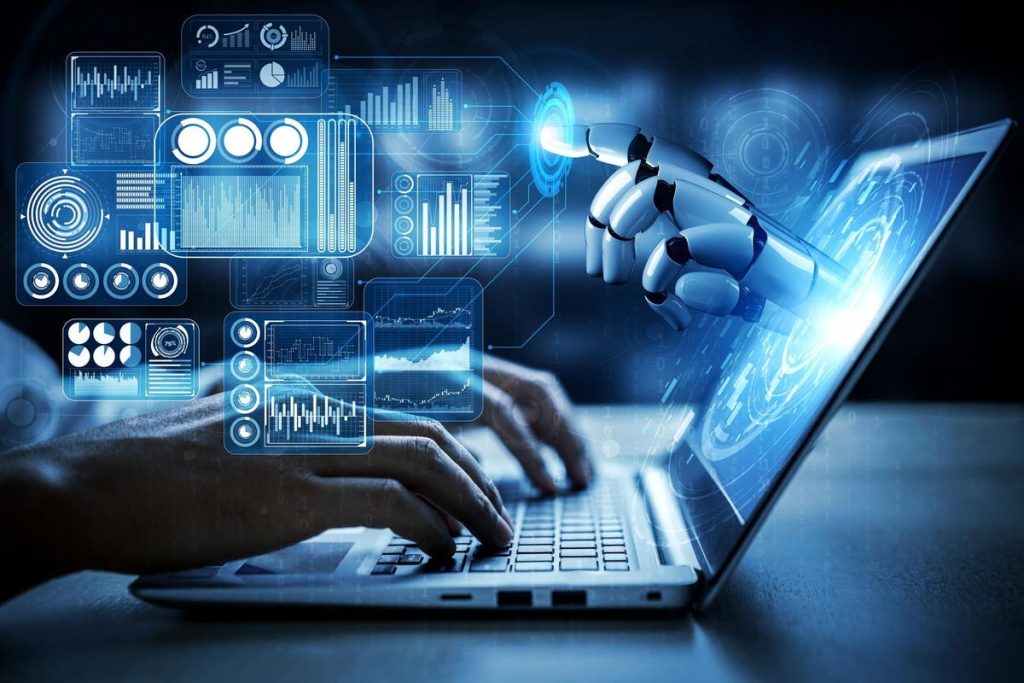CEO of Edge Platforms, EdgeVerve Systems Limited.
Digital technology evokes mixed feelings—love, hate, fear and anxiety. Ten years ago, Jeopardy champ Ken Jennings captured that ambivalence during his loss to IBM’s Watson with this joke: “I for one welcome our new computer overlords.”
As a business leader, you face real challenges emanating from the ever-expanding use of computers, including cybersecurity and privacy. But the case for optimism is strong. Rather than surrendering to digital technology, you are much better off leveraging it, including the capabilities of software robotics. These bots and related systems represent a new class of “digital workers” trained for a wide variety of tasks.
There is no denying that they can create disruption, especially in certain occupations. Managing job loss and displacement is a valid concern. Yet, I don’t believe the future is dystopian. Digital workers can boost the job satisfaction and efficiency of human workers, as well as promote the common desire of companies to become more cognitive and data-driven.
From Factory To Road To Office
From textile machines in the 18th century to robotic manufacturing in the 20th century, automation has transformed more than two centuries of factory floors. Over the past 10 to 15 years, industrial machines combined with a new force—artificial intelligence (AI)—have enabled physical robots to make initial calls and decisions. Machine learning (ML) boosted that capability.
How far have we come? Consider the autonomous vehicle (AV) market, which covers not only use cases within the factory or warehouse such as forklifts but also trucks and cars on the open road. It is a multibillion-dollar industry headed for its first trillion. Labor-constrained enterprises are projecting efficiency gains, with skilled employees remotely taking over the wheel when required and supervising increasingly large fleets.
Automation is the key catalyst fueling transformation in today’s office environments. As predicted by Forrester Vice President and Principal Analyst Craig Le Clair in his insightful 2019 book Invisible Robots in the Quiet of the Night, we are witnessing an exciting evolutionary shift.
According to McKinsey, “As many as 375 million workers—or roughly 14 percent of the global workforce—may need to switch occupational categories as digitization, automation, and advances in artificial intelligence disrupt the world of work.” The recent Covid pandemic has expedited this evolution, inspiring millions to trade their office cubicles for flexible home office environments.
This ongoing trend of automation, while disruptive, is simultaneously opening avenues for the reinvention and enhancement of office operations. Therein lies the true power of automation—not just to disrupt but to innovate and enrich our work lives.
Enterprises that embraced digitally automated operations before the Covid pandemic, for instance, proved much more resilient than those that did not. The new automated solutions can close books, offer price quotes, recover payments, interact with customers and perform a host of other tasks.
As with the case of AVs, companies that embrace automation in other business settings also empower human workers to intervene and add value when circumstances require it.
The use cases are proliferating, along with the supporting blend of robotic process automation (RPA), AI/ML and analytics. Some call the trend hyper-automation. We prefer to associate automation with a word linked with infinity and powerful astronomical forces: singularity.
Data-Driven Automation
Whether you call it hyper-automation, automation singularity (as we do) or something else, the phenomenon depends upon a new kind of workforce. Non-human digital workers may work around the clock, but they have one key requirement: data. In fact, they both need and generate data.
While economic uncertainty is slowing some automation trends in 2023, Forrester expects data-driven automation to remain hot. Growth is likely across the three disciplines of this field.
• Digital workers can provide visibility where it is lacking. Sometimes called task mining, process discovery can create a digitized version of a human worker’s expression on a given device, help redesign customer journeys and identify automation opportunities.
• This discipline involves identifying and implementing the right technology stack and understanding how that technology impacts every part of the employee-process relationship.
• Automation singularity requires coordinating tasks in a unified workforce comprised of human specialists and digital workers. Data captured is critical to driving process visibility and feedback for continuous optimization through human insights and algorithms.
The overall process drives smarter business. Discovery is used to capture what is otherwise hidden and find ways of extracting repetitive tasks, liberating employees for value-added work and combining the innovation and empathy of human workers with the productivity and predictability of digital counterparts.
Challenges To Consider
While automation promises to revolutionize the workplace and increase productivity, it is not without its challenges. The initial cost of implementing automated systems can be significant and might pose a financial hurdle for many businesses. Furthermore, the need for specialized skills to develop, operate and maintain these systems could lead to a shortage of qualified individuals.
Additionally, increased reliance on digital technologies can pose cybersecurity and privacy risks, which must be carefully managed. Finally, the rapid pace of automation could disrupt traditional employment structures, requiring substantial reskilling and retraining initiatives.
Value And Efficiency
The value of automation is surfacing in numerous sectors. In finance and banking, already digital pioneers, leaders are seizing opportunities to automate tasks and optimize the emerging digital-human workforce. Executives in the telecom and retail industries also see how automation can benefit consumers, whose digital expectations have grown alongside their own adoption of technology.
For some human employees, fear and anxiety will remain part of the mix, as the attention generated by ChatGPT has demonstrated. Technology will continue to shape occupations and careers. But assuming you want your enterprise to become more—not less—intelligent, beware of the overly scary predictions.
Automation can align with the North Star of any truly cognitive enterprise; it drives operations that can work with humans to self-learn, self-govern and self-heal.
So, extend a welcome to these new digital workers. Properly integrated within your operations, they can boost your corporate IQ and lead your human teams to greater efficiency, value and job satisfaction.
Forbes Business Council is the foremost growth and networking organization for business owners and leaders. Do I qualify?
Read the full article here









